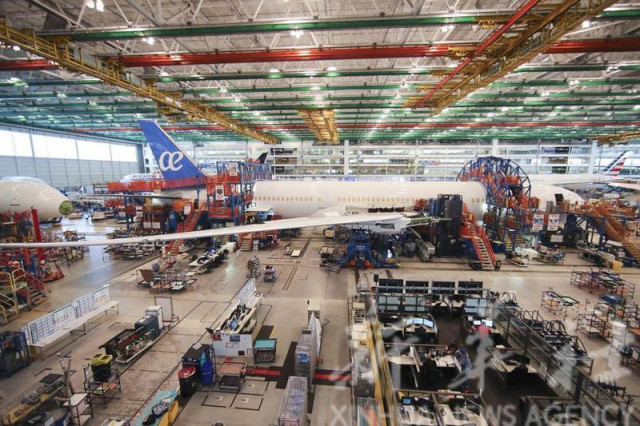The U.S. Manufacturing Purchasing Managers' Index (PMI) stood at 47.2 per cent in August, up 0.4 percentage points from the 46.8 per cent recorded in July.
Any reading below 50 per cent indicates the manufacturing sector is generally contracting.
"While still in contraction territory, U.S. manufacturing activity contracted slower compared to last month. Demand continues to be weak, output declined, and inputs stayed accommodative," Timothy Fiore, chair of the ISM's manufacturing business survey committee, said in a statement.
Fiore said that demand slowing was reflected by the New Orders Index dropping further into contraction, New Export Orders Index contracting slightly faster, Backlog of Orders Index remaining in strong contraction territory, and Customers' Inventories Index at the "just right" level.
He said, "The New Orders Index registered 44.6 per cent, 2.8 percentage points lower than in July. The New Export Orders Index reading of 48.6 per cent was 0.4 percentage points lower than in July. The Backlog of Orders Index registered 43.6 per cent, up 1.9 percentage points compared to July.
"Demand remains subdued, as companies show an unwillingness to invest in capital and inventory due to current federal monetary policy and election uncertainty."
U.S. Federal Reserve Chair Jerome Powell recently said that the "time has come" for monetary policy to adjust, sending a straightforward message to markets that the central bank will likely cut interest rates in its September 17-18 meeting.The Chicago Mercantile Exchange Group's FedWatch Tool, which acts as a barometer for the market's expectation of the Fed funds target rate, showed that the probability of the Fed cutting rates by 25 basis points at the September meeting is 62 per cent as of Tuesday.
The probability of the Fed cutting rates by 50 basis points is 38 per cent.
"High interest rates are curtailing consumer spending on large discretionary spending for furniture, cabinetry, flooring and decorative trim, which has affected our industry sales potential," according to a business executive from the Wood Products industry.
"At the same time, the executive said, pent-up demand seems to be growing for housing and remodeling, and interest rate cuts "may not happen soon enough to have an impact this year."
Meanwhile, an executive from the Chemical Products industry, noted that there is a "noticeable slowdown" in business activity.
"Staffing and production rationalisation has been triggered. Previous optimism about future growth has been dashed," the executive said.




















